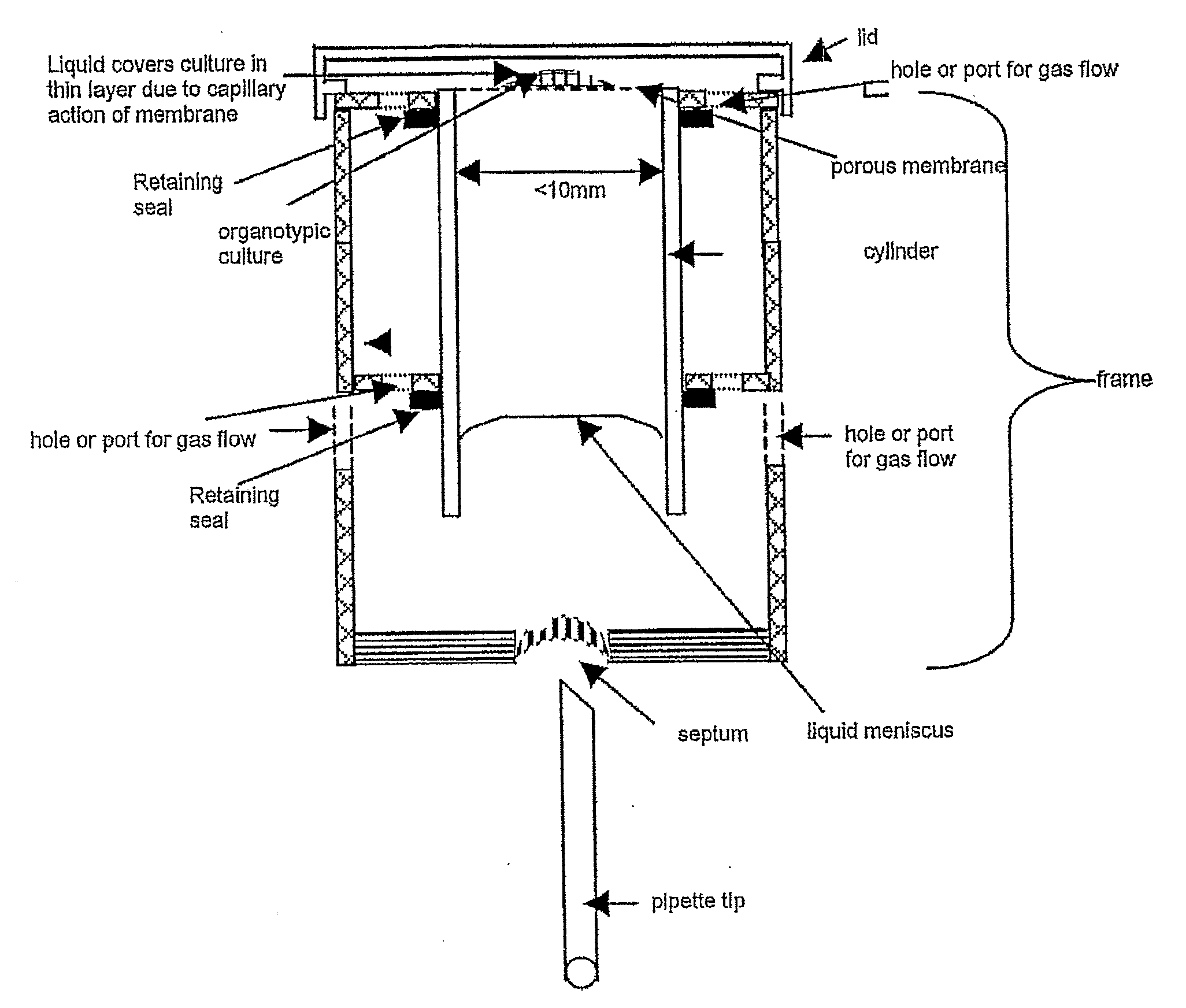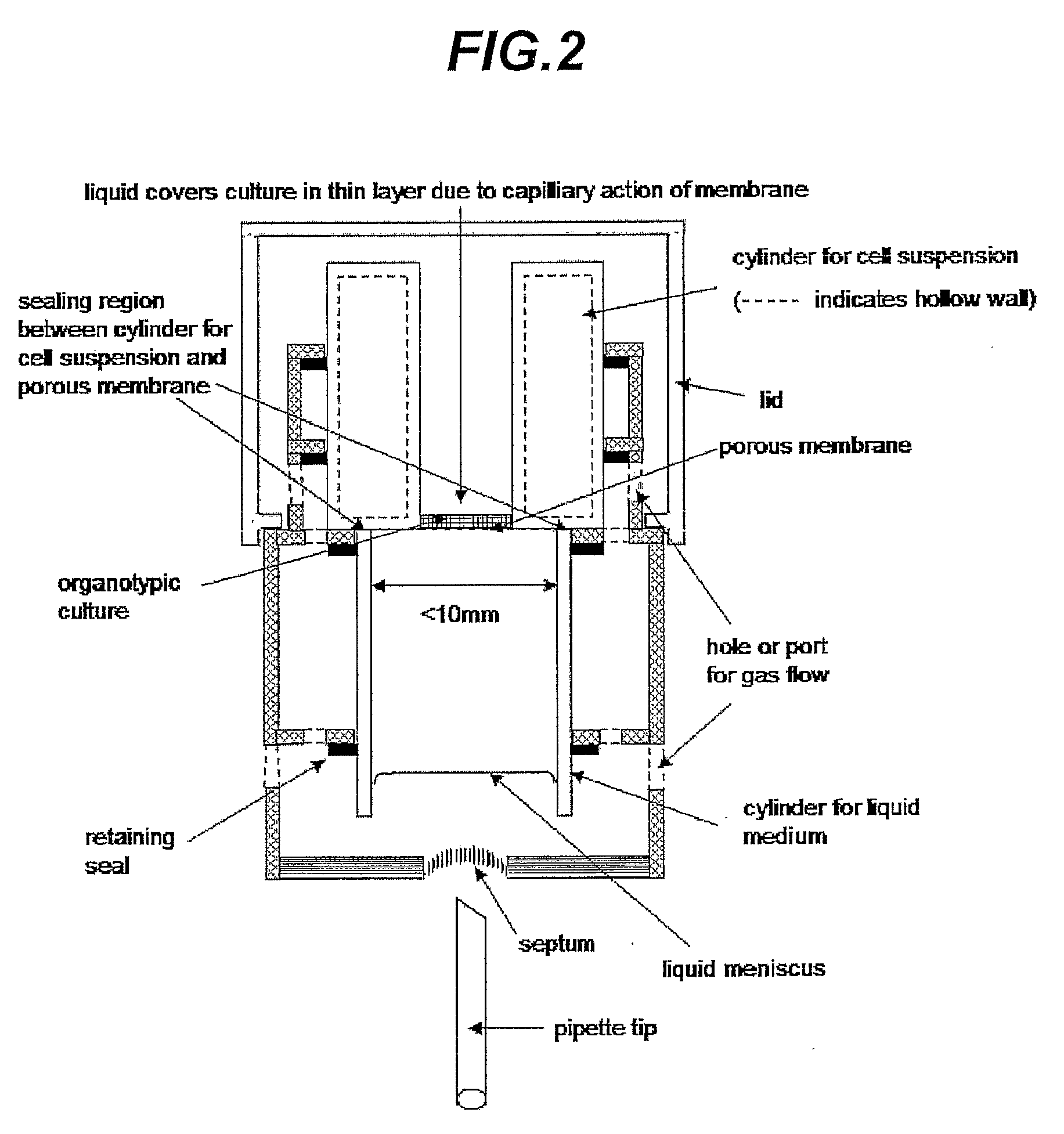Cell- and Tissue Culture Device
a cell and tissue culture technology, applied in the field of cell and tissue culture, can solve the problems of inability to accurately predict in vivo responses of primary cell cultures, the only life of cells is limited, and the characteristics of cultured cells are usually los
- Summary
- Abstract
- Description
- Claims
- Application Information
AI Technical Summary
Benefits of technology
Problems solved by technology
Method used
Image
Examples
Embodiment Construction
[0058]As shown in FIG. 1, a preferred device of the invention comprises a cylinder as a medium conduit and a porous membrane glued or heat-sealed or ultrasonically sealed to one end of the cylinder, and a frame which holds the cylinder vertically and creates a chamber surrounding the open end of the cylinder.
[0059]The cylinder contains a volume of liquid culture medium which is retained by capillarity in the cylinder so that it is in contact with the lower surface of the porous membrane. The liquid meniscus of the volume of liquid medium is shown.
[0060]As shown in FIG. 2, a further preferred device of the invention comprises a cylinder as a medium conduit and a porous membrane glued or heat-sealed or ultrasonically sealed to one end of the medium conduit, and a further cylinder as a cell suspension conduit that is sealed to the contralateral side of the porous membrane to the medium cylinder, and a frame which holds both cylinders vertically and creates a chamber surrounding the ope...
PUM
 Login to View More
Login to View More Abstract
Description
Claims
Application Information
 Login to View More
Login to View More - R&D
- Intellectual Property
- Life Sciences
- Materials
- Tech Scout
- Unparalleled Data Quality
- Higher Quality Content
- 60% Fewer Hallucinations
Browse by: Latest US Patents, China's latest patents, Technical Efficacy Thesaurus, Application Domain, Technology Topic, Popular Technical Reports.
© 2025 PatSnap. All rights reserved.Legal|Privacy policy|Modern Slavery Act Transparency Statement|Sitemap|About US| Contact US: help@patsnap.com



